Extending engagement
with rewards
Overview
2K develops and publishes interactive entertainment globally for consoles, computers, and mobile devices.
My Role
◆ Research
◆ Ideation
◆ Prototyping
◆ Wireframing
◆ Usability testing
Team
◆ Product Manager
◆ Engineers
◆ Domain experts
◆ Game economist
◆ Visual Designer
Limitations
◆ Too many chefs
◆ Multiple tech stacks
Problem to solve
Research on 2K's flagship product, NBA2K, revealed players were abandoning the game just a few months after release.
Business Objective
Extend user engagement and retention for our top gaming products in the sports category.
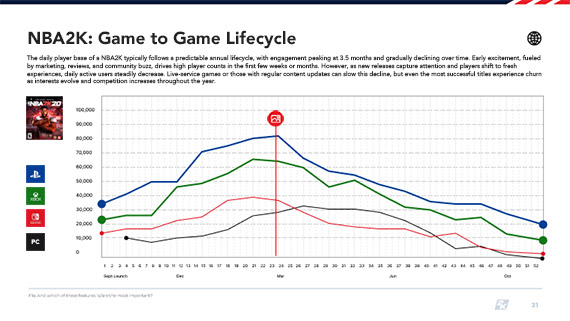
Researching solutions
We held two brainstorming sessions with producers from NBA and PGA, community experts, the PR team, the Design team, and various managers and directors. The top four ideas are presented below.
38%
In-game rewards
34%
IRL Web based rewards
21%
New game modes
20%
Daily & weekly challenges
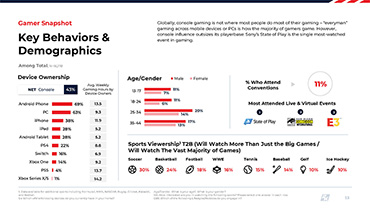
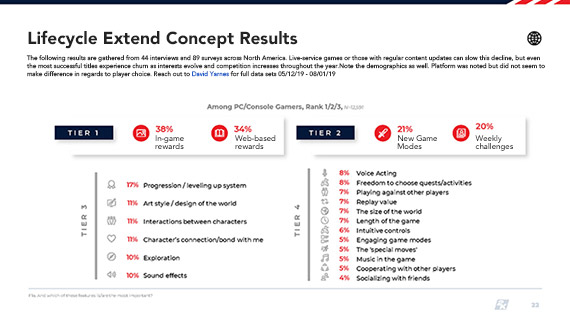
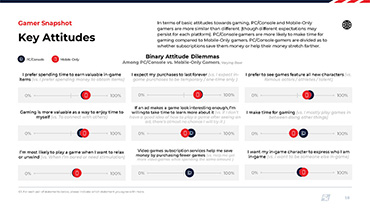
Resource limitations define our solution
We evaluated the top 4 ideas based on research and feasibility. While users preferred in-game rewards, game engineers lacked the resources to implement them in the next release. As a result, we decided to pursue web-based rewards instead.
Design Process

Define
Event-storming sessions helped establish the products requirements, features and improved stakeholder understanding.
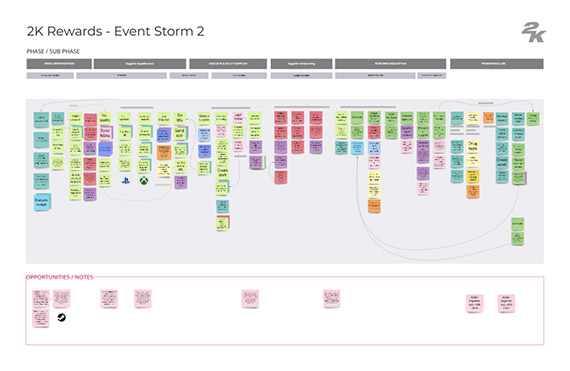
Research
We created a research plan that involved analyzing existing data alongside new approaches to better understand our users' mental models and customer journey.
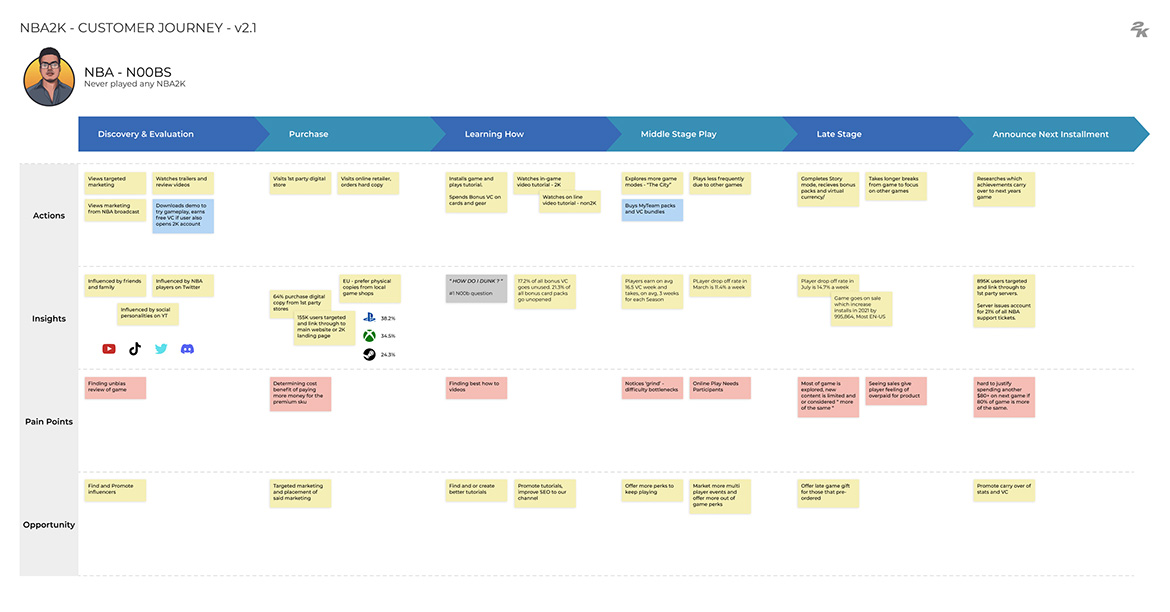
Competitive analysis
We analyzed a range of similar products across different industries, from Starbucks Rewards to direct competitors like EA Play. We also surveyed 54 users to identify any pain points with these programs.
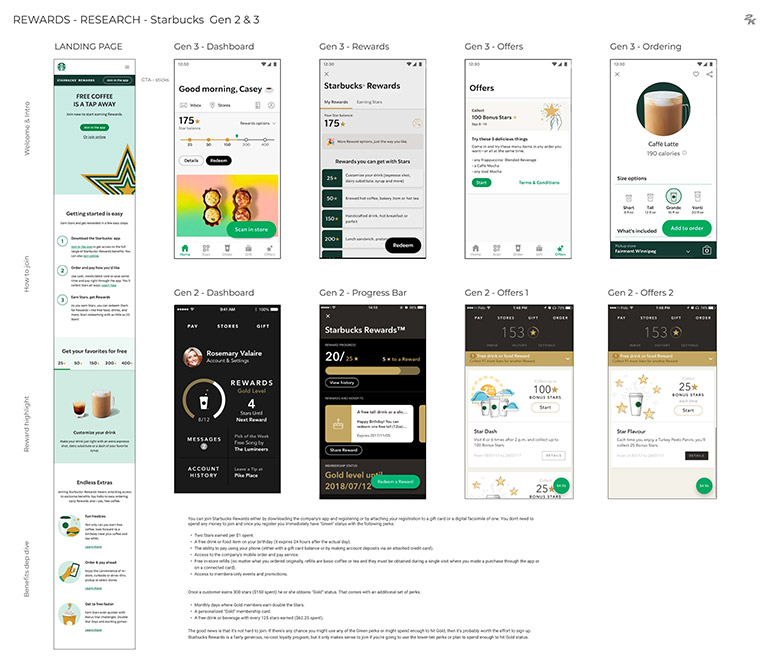
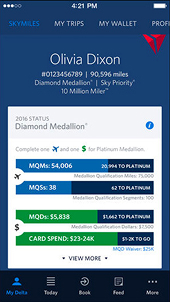

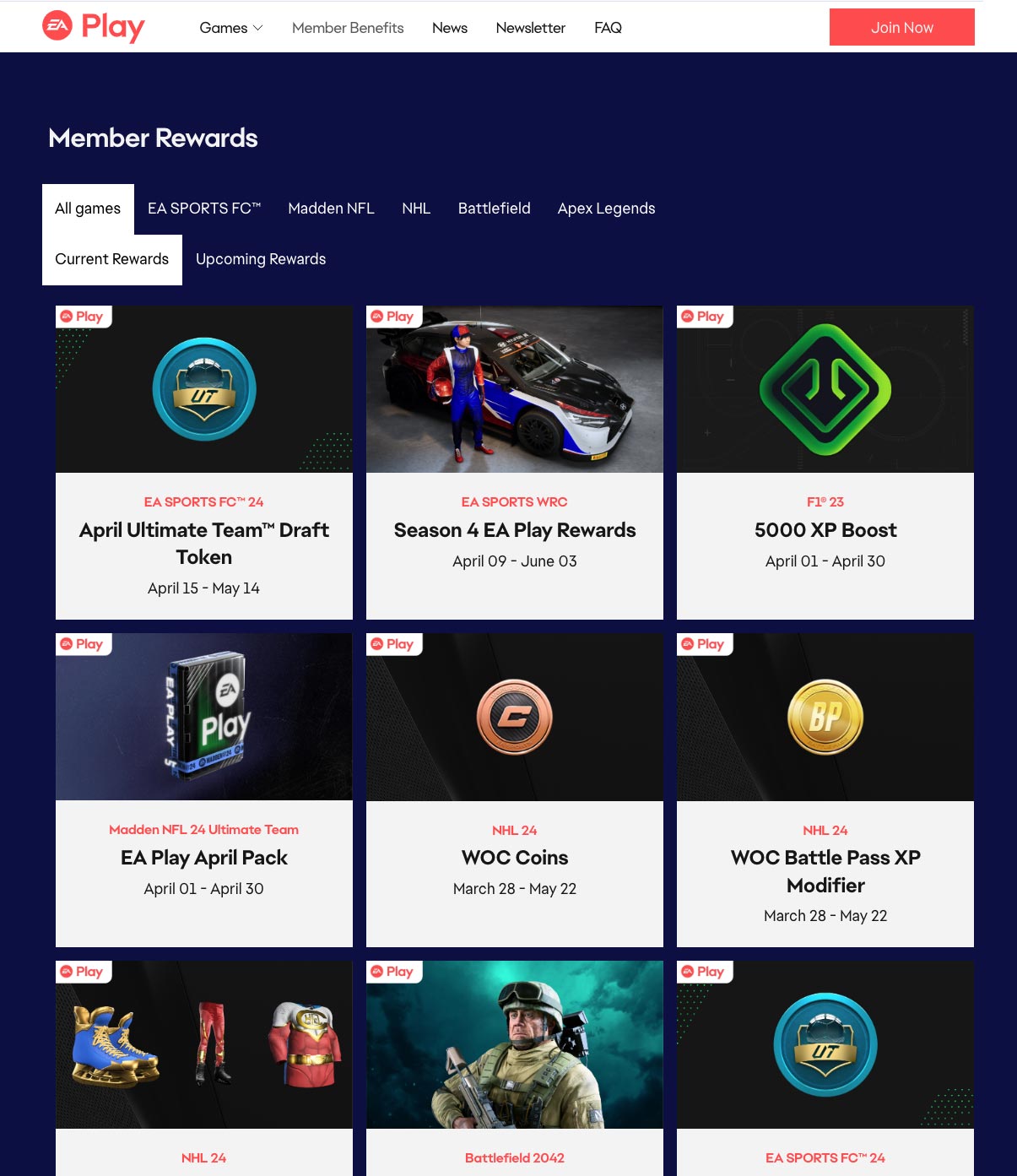
54
Users of reward and loyalty programs shared their thoughts via online survey.
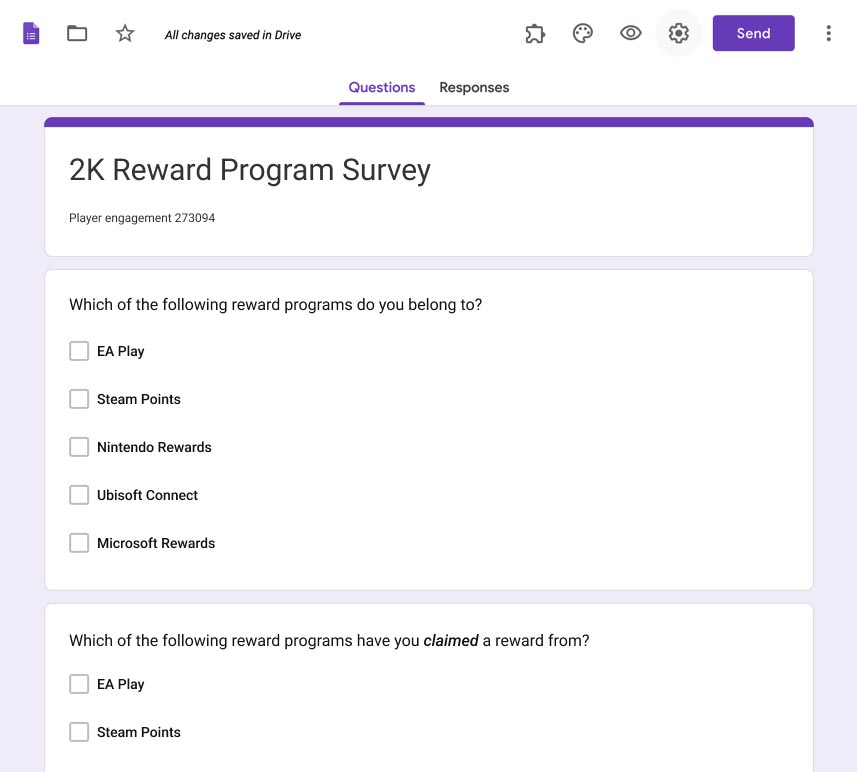
Learnings
Below are the key insights and takeaways that emerged from our analysis.
◆ There are a spectrum of users with various expectations.
◆ Reward and loyalty programs are highly transactional experience. Users want in and out.
◆ Users expect rewards points to appear shortly after earned in-game.
◆ Surprisingly, there was lesser desire for the ability to view game statistics.
Architecture and flows
Once we defined the requirements and goals and thoroughly analyzed the research, we moved on to establishing the overall architecture and mapping out various user flows
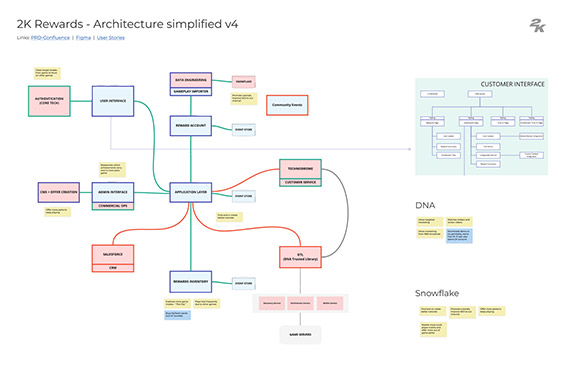
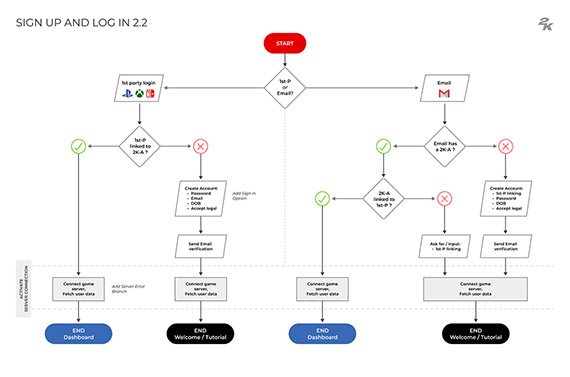
Ideation & Concept Testing
We create UI patterns and layouts that help us evaluate which ideas are working and what level of resources will be needed to execute them.
1. Progress indicators
We concept tested various progress bars with 20 users to determine what they noticed first and how well they understood the information.
Results: linear progress indicators were more intuitive, along with the idea of "banked points".
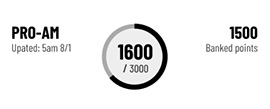

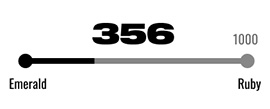
2. Dashboard layouts
Multiple mobile layouts were subjected to concept testing to evaluate different visual hierarchies and feature placements. We explored how variations in element positioning influenced engagement and usability.
Results: The clean, minimal designs were more effective at framing key data and improved user engagement.

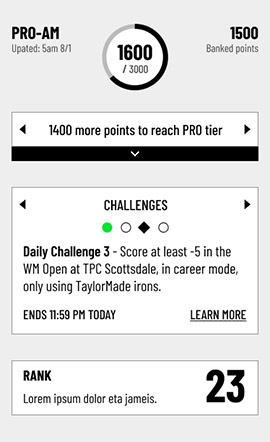
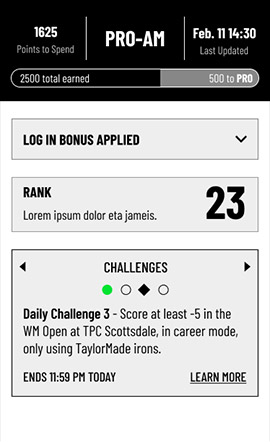
3. Checkout flow prototypes
◆ A flow using a cart for purchasing multiple items simultaneously.
◆ Checkout experience designed specifically for purchasing a single item.
Results: These tests combined with earlier research indicated no need for a cart feature.
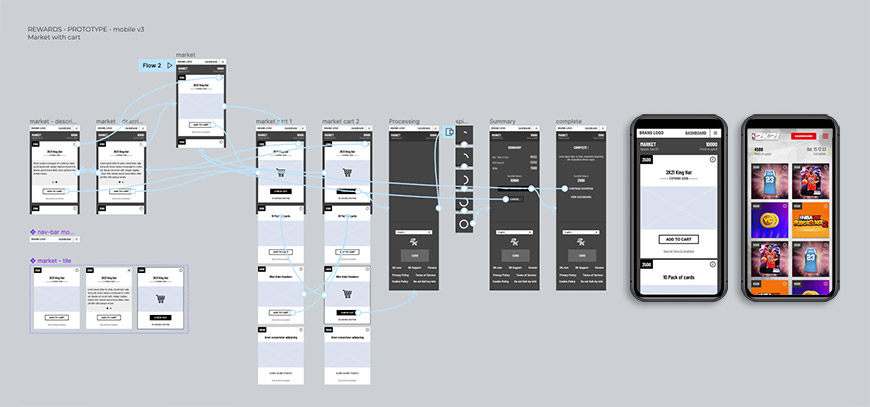
Wireframes
Phases often overlap, and teams cycle back once new data has been analyzed. Since some ideas and UI patterns were still being tested, we had to manage multiple sets of wireframes. After determining and prioritizing which ideas would move forward, we created layouts of the entire product.


Challenges
Launching the NBA version presented significant challenges due to limited resources and conflicting internal priorities. Since NBA2K is an annual title and 2K keeps its resources lean, any new feature or project is often planned years out, making it difficult to allocate time and manpower to new initiatives. Teams were pulled in different directions, balancing demands from other high-profile projects and strategic initiatives, which impacted resource allocation and focus. As a result, progress was slowed, and key decisions were delayed. In the end, 2K's rewards was launched with their PGA2K game.
Visual design
Once we establish specifications for all assets, visual designers were onboarded to brand and style the product for each individual game.

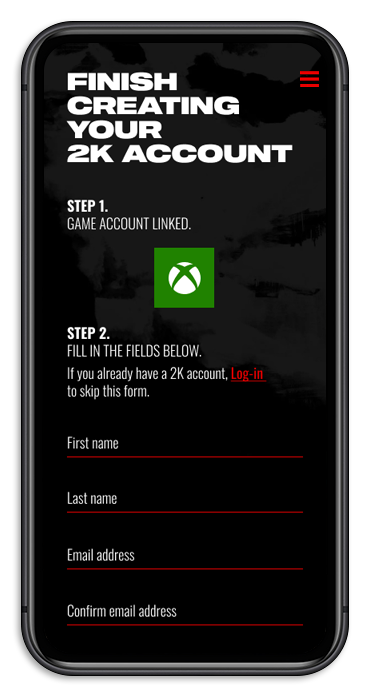
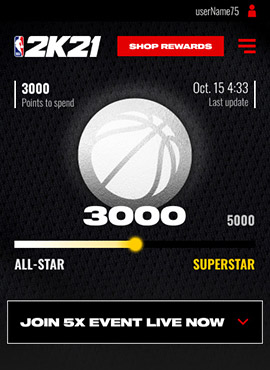
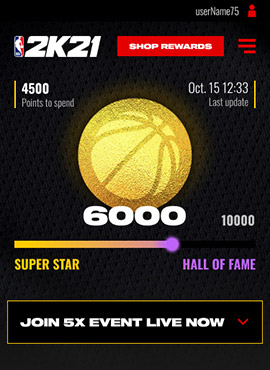
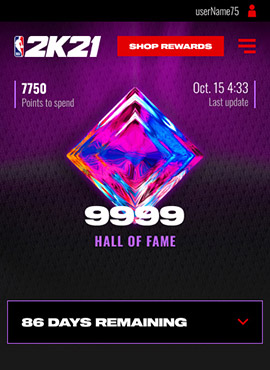
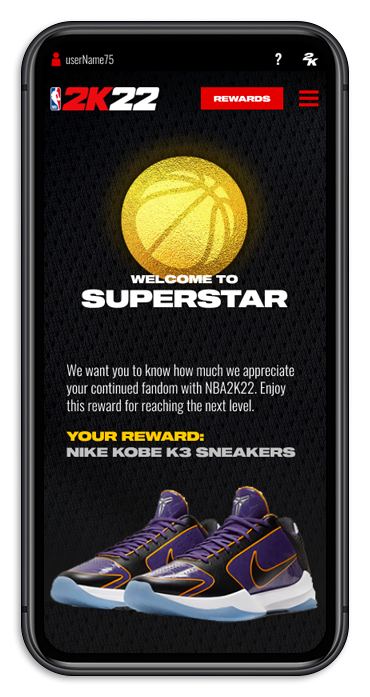
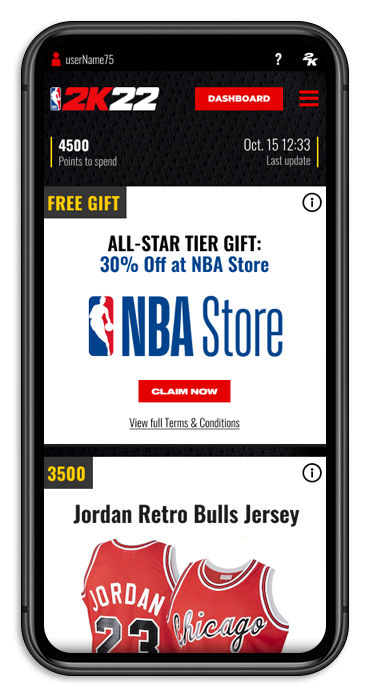


Conclusion
The reward program proved successful at increasing player engagement, as demonstrated by a 22% boost with PGA2K. By designing incentives that resonated with users, we enhanced satisfaction and encourage continued participation.
22%
User engagement improvement